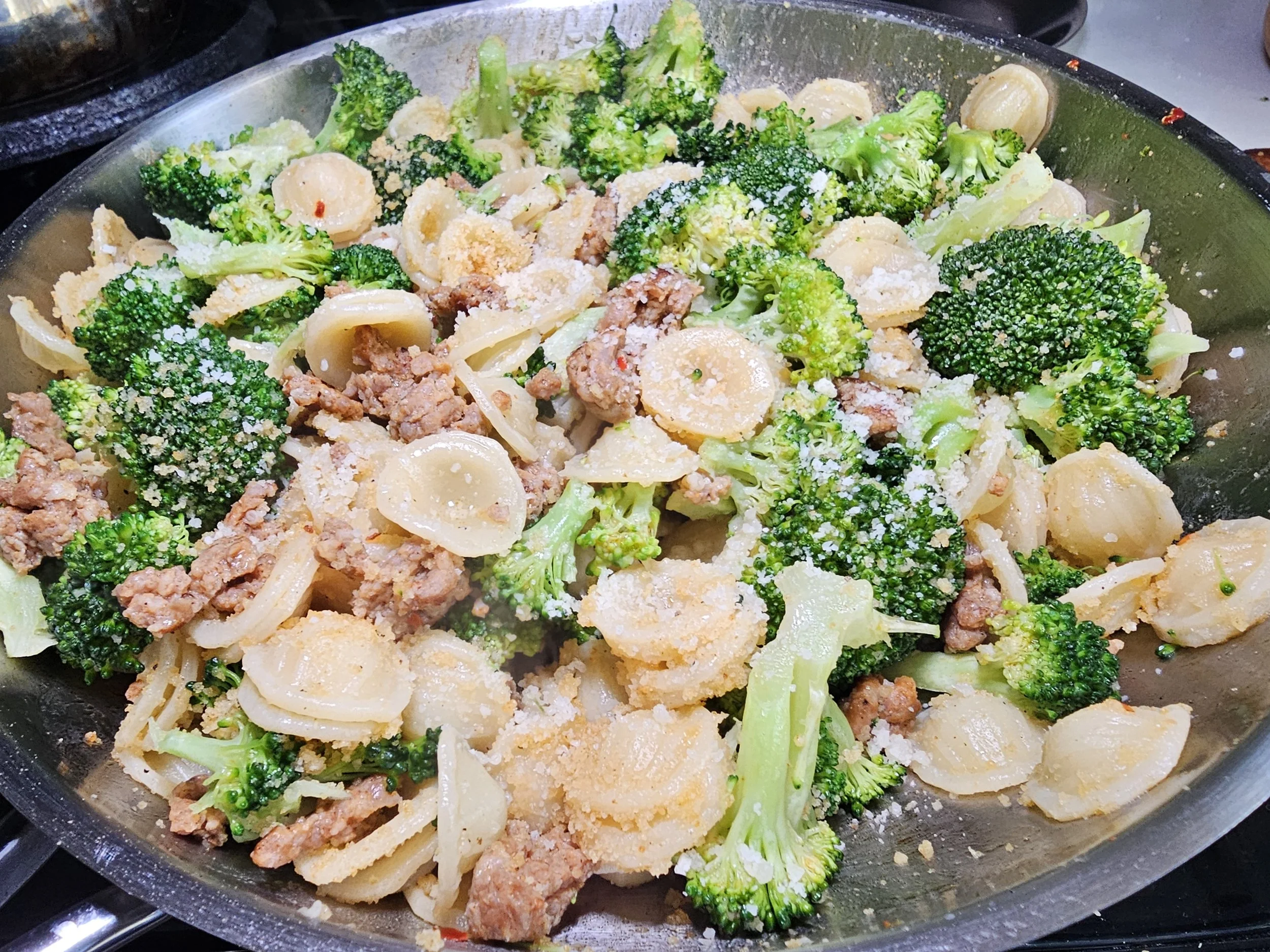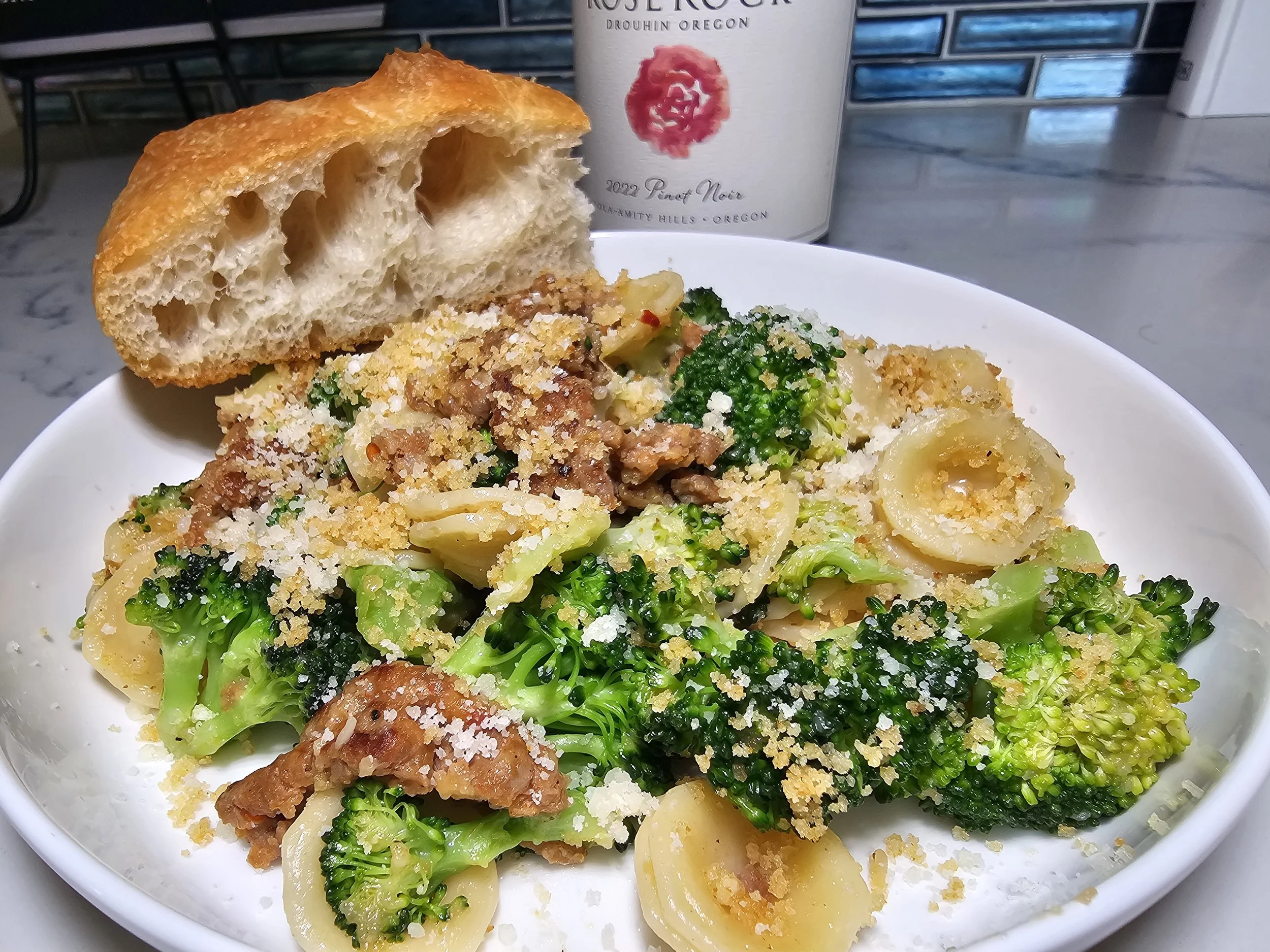Their design is no accident—orecchiette’s cupped surface is perfect for catching bits of sauce, oil, and tender greens. It’s pasta designed for both texture and flavor, with a history that stretches back to the Middle Ages.
Then comes the broccoli rabe (cime di rapa). This leafy, slightly bitter vegetable has been part of the Mediterranean diet for centuries, once gathered wild before becoming a staple crop in southern Italy. Its peppery bite cuts through the richness of pork and pasta, delivering a balance that feels both earthy and elevated.
raditionally, Pugliese families made orecchiette con cime di rapa without meat—just pasta, greens, garlic, anchovy, and chili for depth. It was cucina povera, peasant cooking at its finest: simple, resourceful, and utterly delicious.
The addition of sausage came later, as pork became more accessible and as the dish traveled abroad with Italian immigrants. In Italian-American kitchens, particularly in the Northeast, sausage gave the dish more heft and richness, turning it into a hearty centerpiece. Today, both versions—the lean, anchovy-laced classic and the sausage-studded adaptation—stand side by side, each with its own devoted following.
Orecchiette with sausage and broccoli rabe is more than a recipe—it’s a story of resilience and adaptation. From Bari’s cobbled streets to New York trattorias, it showcases the best of southern Italian cooking: handmade pasta, bold flavors, and ingredients that celebrate both land and season.


